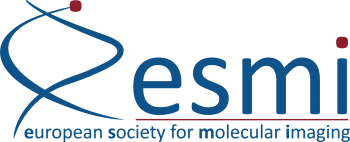Fluorescence Molecular Tomography (FMT) is a pre-clinical imaging method, aimed at in-vivo visualization of the fluorescence distribution inside small animals. Fluorescence agents that give information on disease biomarkers can be used to deliver insight on disease progression and treatment effects. FMT systems employ a near-infrared laser for illumination and sensitive CCD cameras for light detection. A reconstruction technique is applied in order to recover the 3d fluorescence distribution. The reconstruction is complicated by the scattering and absorbing nature of light in the near-infrared range. Furthermore, FMT offers molecular contrast, but no anatomical reference.
In order to improve imaging performance, optical tomography can be complemented with another imaging modality. Combination with X-ray CT (XCT) is a sensible choice because XCT provides anatomical contrast and has construction characteristics similar to fluorescence tomography. A CCD based hybrid FMT system for 360° imaging combined with XCT was built at our institute, offering an accurately co-registered and information-rich hybrid data set, with many new imaging possibilities compared to standalone FMT and XCT.
The aim of this work was the development of improved methods for reconstruction of the fluorescence distribution by exploiting the new capabilities of the hybrid FMT-XCT system. We focussed on the development of methods that do not rely on user input and do not bias the solution. This is particularly important in fluorescence tomography, because generally no accurate prior knowledge exists on the fluorescence bio-distribution. We developed a practical method that is applicable under a wide range of experimental conditions.
The developed method uses the X-ray CT information in the forward light propagation model in the form of optical attenuation properties determined for each anatomical region. The inversion method is a two-step procedure. In the first step, a reconstruction of the fluuorescence distribution is obtained by inverting the forward light propagation model. Based on the result from the first inversion, a set of parameters is defined that are correlated with the amount of fluorescence reconstructed in each anatomical region. These parameters are translated to regularization parameters that build up a structural penalty matrix. In the second step, a sequential inversion of the forward model is performed using the structural penalty matrix, resulting in the reconstruction of the fluorescence distribution. Additionally, the X-ray CT information was used in a pre-processing step in the reconstruction method, in the form of an X-ray CT based background fluorescence subtraction. During post-processing, the X-ray CT information was used to visualize the reconstruction of the fluorescence distribution together with the anatomical information provided by X-ray CT resulting in images with a high information density.
We performed phantom experiments, ex-vivo and in-vivo mouse experiments in parallel with the development of the hybrid methods. Results were validated using invasive post-mortem planar fluorescence imaging. We applied the developed methods to study a subcutaneous breast cancer model, imaged using a variety of fluorescent probes. We show results of two longitudinal studies of cancer progression: a study of a transgenic mouse model of lung cancer and a brain cancer study using uorescent proteins. We performed
an imaging study of an osteogenesis imperfecta mouse model, and nally we describe a study of apoptosis after myocardial infarction.
We observed that besides the benet of anatomical guidance, the hybrid system resulted in the most accurate FMT performance offered to-date. FMT-XCT is expected to evolve as an important method for delivering advanced XCT and FMT performance. The increased accuracy and contrast that comes with this approach could nd diverse biomedical applications in drug development, studying disease growth or observing patho-physiological mechanisms over time.
Congratulations!
“After forming a broad basis of understanding of the different methods that are used to model biological processes and mechanisms at different scales, I plan to combine this with my knowledge of biomedical imaging. My long term goal is to maximize the capabilities of both approaches, and build up an environment in which biomedical imaging and biological modelling are closely linked, which will lead to major biomedical insights.”
Angelique Ale on her future carreer plans
Together with Lucia Crane Angelique Ale received the first ESMI PhD award for excellent PhD thesis.
